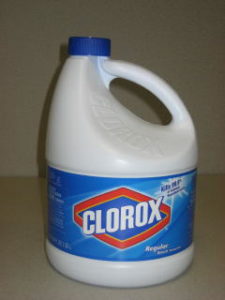Disinfecting Wells – How to Shock a Well
If you live in a rural setting and have a well then you should test your water regularly to monitor it for bacterial contamination. Well water is influenced by the surface and ground water supply and because of this bacteria can end up in your drinking water. This bacteria is usually not harmful and will not make you sick but occasionally it is! Coliform and E.Coli bacteria can make you very sick. Disinfecting wells is an important part of the regular maintenance of owing rural property. The following is intended to help you do it successfully.
Procedure for disinfecting wells (from Public Health Ontario)
 Store enough water to meet your household needs for at least 12 hours
Store enough water to meet your household needs for at least 12 hours- Bypass or disconnect any carbon filters or water treatment filters such as softeners or iron removal systems. These items will NOT be disinfected however high levels of chlorine can damage the media in these units. Check with the manufacturer re appropriate disinfection protocols for your specific unit.
- Turn off hot water tank.
- Estimate the amount of chlorine required for your well you can use this Public Health Ontario chlorine calculation tool
- Drain all water out of plumbing including the hot water tank prior to dosing.
- Mix the chlorine required to disinfect the well in 25 litres (5 gallons) of water. Note: The well calculator accounts for the extra 25 litres of water used for mixing.
- Pour the mixture into your well.
- If possible, mix the water in the well. This can be accomplished by attaching a hose to a tap and running water from the well through the hose and back into the well.
- Start the pump and bleed air from the pressure tank. Open all water taps one at a time, including outside hose bibs and cold and hot water taps. Allow the water to run until a chlorine smell is detected from each faucet then turn off each tap. Since chlorinated water can damage the action in a septic system, chlorinated water should not be allowed into the building’s sewage system.
- If a strong chlorine odour is not present, return to step 5, add half the amount of chlorine used for the initial treatment to the well and repeat steps 6 and 7.
- Let the chlorinated water stand in the system for 12 – 24 hours.
- Start the pump and run water through the outside hose away from vegetation until the strong smell of chlorine disappears. Make certain that the water does not enter any watercourse. Finally, open the indoor taps until the system is completely flushed. Taps or fixtures discharging to the septic tank systems should be temporarily diverted to an outside discharge point to avoid affecting the septic system.
- Wait 48 hours and then sample the water using the instructions and bottle provided by the laboratory. Two consecutive “safe” tests, performed on samples obtained over a period of one to three weeks, will probably indicate that the treatment has been effective.
- If the above steps do not alleviate the problem, it is recommended that the source of the ongoing contamination be determined and corrected, possibly with professional help.
Disclaimer
The disinfecting wells tool is provided/being made available by Public Health Ontario without any warranties, express or implied, including fitness for a particular purpose. Public Health Ontario, its directors, employees and agents shall not be liable or responsible to any person for any harm, loss or damage that may arise in any connection with the use of the well disinfection tool, including without limitation any direct, indirect, special, third party, or consequential damages.